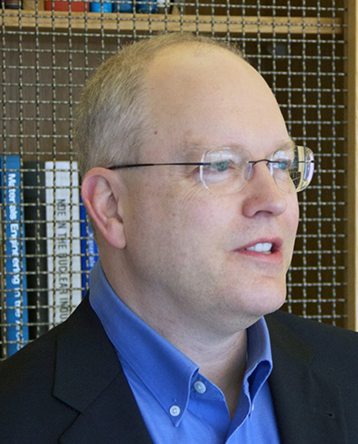Philip Koopman
Associate Professor, Electrical and Computer Engineering
Associate Professor, Electrical and Computer Engineering

Philip Koopman is an associate professor in Electrical and Computer Engineering with additional affiliations with the Software and Societal Systems Department and the Robotics Institute. He leads research on safe and secure embedded systems and teaches cost-effective embedded system design techniques. He has over 20 years of experience with autonomous vehicle safety, dating back to the Carnegie Mellon Navlab team and the Automated Highway Systems (AHS) program.
Koopman’s most recent projects include using stress testing and run time monitoring to ensure safety for a variety of vehicle and robotic applications for research, industry, and defense applications. He has additional experience with automotive and industrial functional safety, including testifying as an expert in vehicle safety class action litigation and consulting to NHTSA. He is a co-founder of Edge Case Research, which provides tools and services for autonomous vehicle testing and safety validation.
His pre-university career includes experience as a US Navy submarine officer, an embedded CPU designer at Harris Semiconductor, and an embedded system architect at United Technologies. He is a senior member of IEEE and ACM, and a member of SAE.
1989 Ph.D., Computer Engineering, Carnegie Mellon University
1982 Master of Engineering, Computer and Systems Engineering, Rensselaer Polytechnic Institute
1982 BS, Computer and Systems Engineering, Rensselaer Polytechnic Institute
ECE's Phil Koopman received the Industry Legend Award at Cars of the Future’s 2024 Self-Driving Industry Awards.
Business Insider
ECE’s Phil Koopman spoke to Business Insider about how Tesla will need to gain permission from the federal government to sell its Cybercab.
Yahoo!Finance
ECE’s Phil Koopman recommends caution for investors excited about robotaxis expanding their scope into new cities.
TheNationalDesk.com
ECE’s Phill Koopman talked about autonomous vehicle safety statistics and where they may be misleading.
AP
ECE’s Phil Koopman spoke with AP about questions and doubts surrounding how prepared Tesla’s autonomous vehicles are to deal with real-world situations.
The New York Times
ECE’s Phil Koopman spoke with The New York Times about how Alphabet’s robot taxi service Waymo has been expanding, and what the future may hold in store for it.
Bloomberg
ECE’s Phil Koopman comments on the role of current driver monitoring systems (DMS) in the prevention of road fatalities.
Market Watch
ECE’s Phil Koopman was quoted by Market Watch on the safety of robotaxis, specifically mentioning how there is currently not enough data on robotaxis to guarantee public safety. “In the U.S. human drivers might see one fatality per 100 million vehicle miles. Companies who have a small fraction of that number of miles—7.1 million in the latest Waymo study—are nowhere near knowing how fatalities will turn out,” Koopman stated.
Axios
ECE’s Phil Koopman spoke to Axios about AI’s role in the development of autonomous vehicles. “Learning-based AVs can be taught driving skills more quickly, but the black-box nature of machine learning-based behavior makes it more difficult to validate safety,” Koopman told the outlet.
The Associated Press
ECE’s Phil Koopman spoke with the Associated Press about General Motor’s robotaxi tests, which will begin soon in Phoenix, Arizona.
BNN Bloomberg
ECE’s Phil Koopman was quoted in a story by BNN Bloomberg about recent probes initiated by the National Highway Traffic Safety Administration into automated driving systems from companies such as Waymo and Tesla.
Fast Company
ECE’s Phil Koopman spoke with Fast Company about Tesla’s recent settlement involving a deadly crash involving their autopilot feature.